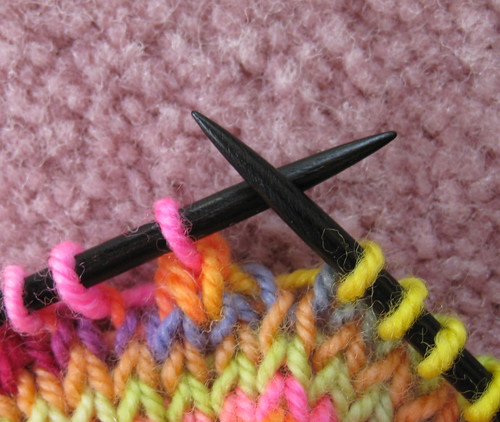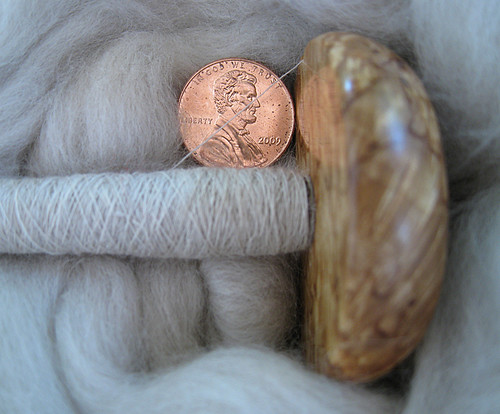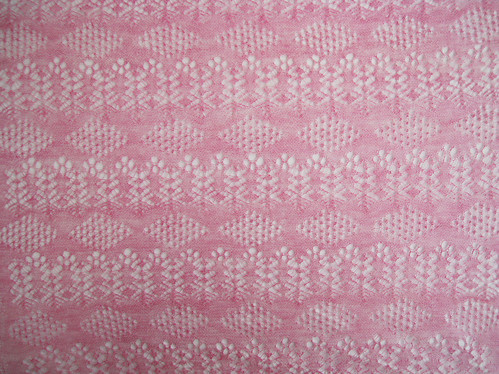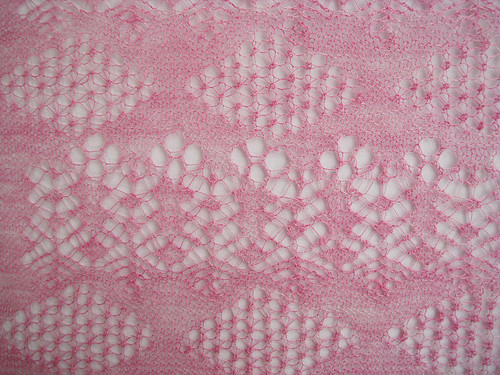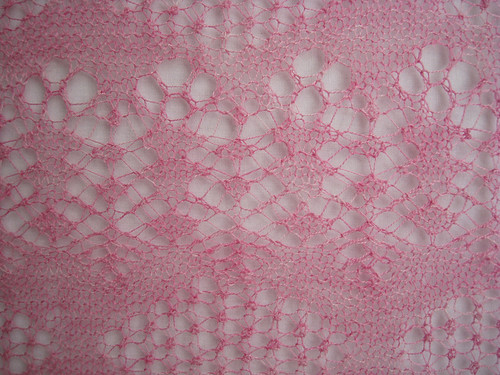If you hunt around the Internet in search of purl decreases, you will probably encounter only two: the right-slanting single decrease (P2tog) and the right-slanting double decrease (P3tog). There may be times, however, when you need single or double
left-slanting purl decreases or a double purl decrease with no slant at all.
Most commonly, you will encounter these
snarky decreases if you are knitting garter-stitch lace in-the-round, for example, a borders-outward shawl in a single piece. To maintain garter stitch in the round, alternate rows must be purled (unless you are cheating and going to futz one corner so you can knit back and forth). And if you are knitting Shetland lace, there's probably no way you will escape having to work double purl decreases with no slant. Central double decreases abound in Shetland patterns.
After perusing my standard books, such as Barbara Walker's
Charted Knitting Designs, and rejecting most of the solutions as kinda awkward, I fiddled around with a few different ways of accomplishing these dratted decreases. Some people hate purling through the back of stitches. Others don't find this uncomfortable. Please try all these methods and decide which one works best for you.
Left-Slanting Single Purl DecreaseThe most common method is purling through the back of two stitches
thusly:
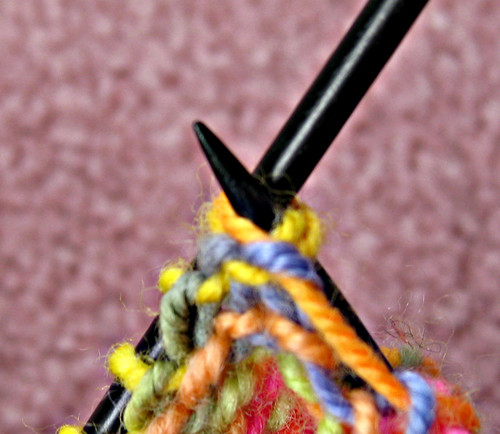
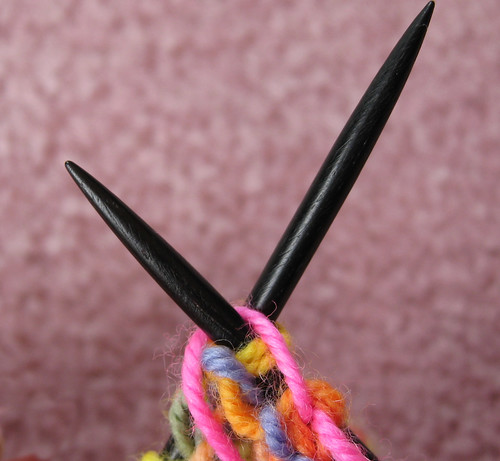
the finished stitch on the purl side:

And finished stitch on the knit side:

If you hate this process, then slip two stitches, one at a time,
knitwise.
first stitch slipped...
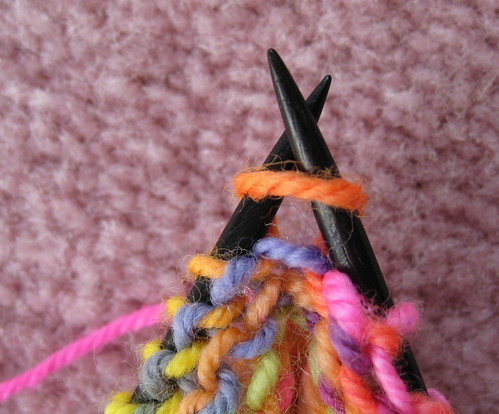
.... second stitch slipped.
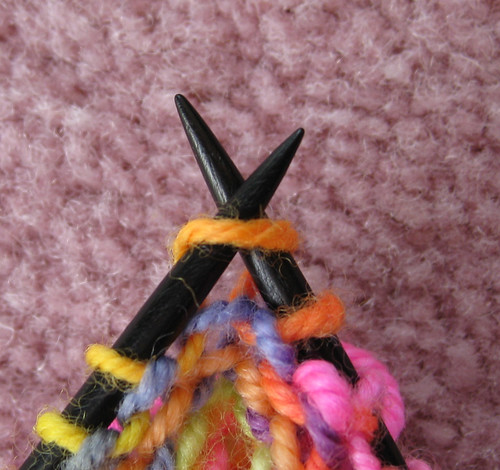
Then insert the tip of the left needle through the front of these two stitches (which are now on the right needle)...

and slip them back to the left needle as a unit. Notice that the stitches have switch positions.
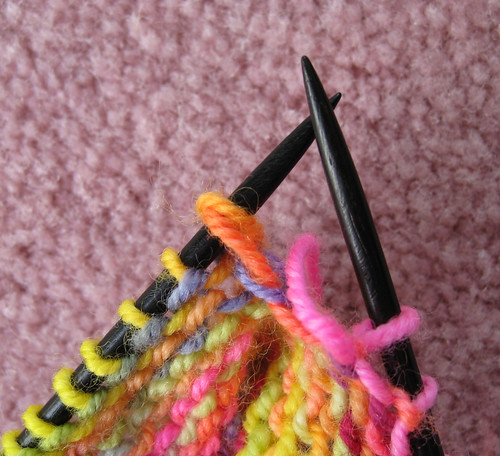
Purl these two stitches together.
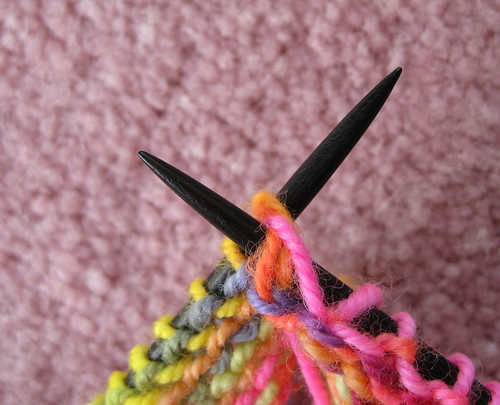
Here's the finished stitch on the purl side:
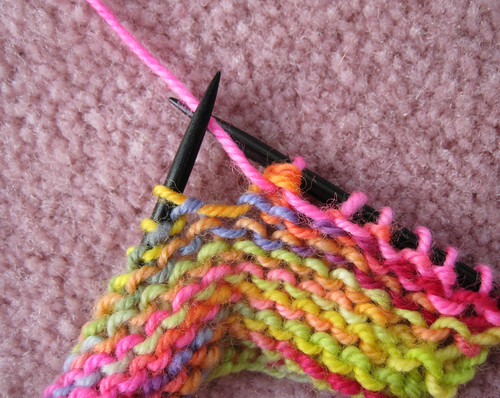
And here's the knit side:

The second method seems easier to me for purling together two stitches when one of them is a
yarnover. But sometimes I just purl through the back. Which method I choose depends a great deal on the yarn--some yarns don't like the back stitch, some don't like the slip-and-flip business. Take your pick :)
Left-Slanting Double Purl DecreaseThis is just an extension of the single decrease, but with added torment. No matter which method you use, the process is awful. My favorite method, not
described here in detail, is to avoid patterns that require me to do this.
Anyway.
You can purl through the back of three stitches:
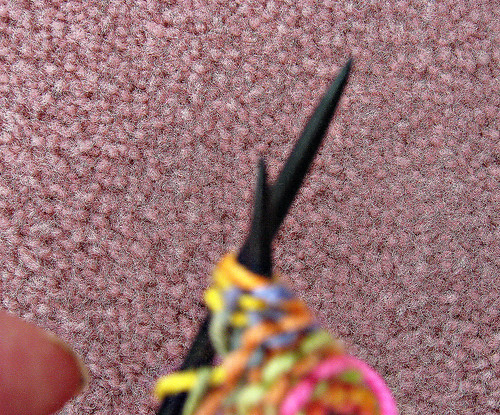

Here's what it looks like on the knit side:

Or, slip three stitches, one at a time,
purlwise.
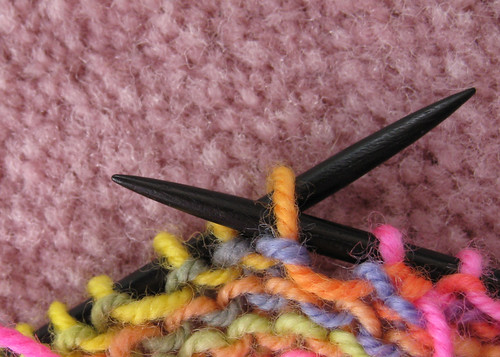
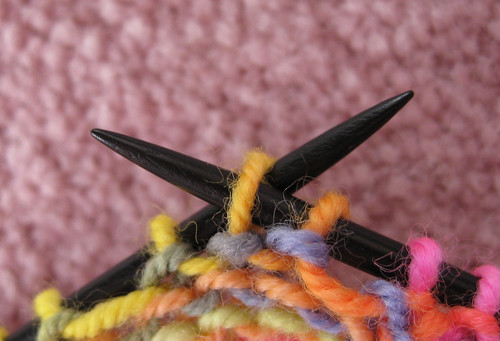

Then insert the tip of the left needle through the front of these three stitches (which are now on the right needle),
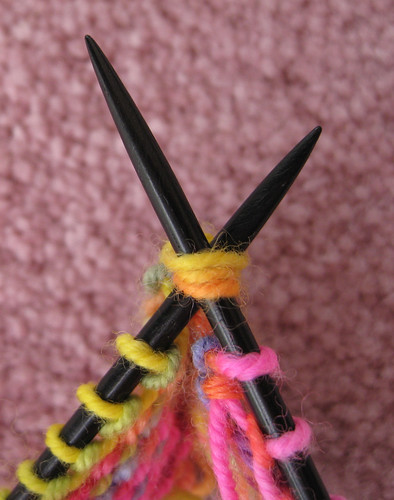
and slip them back to the left needle as a unit.
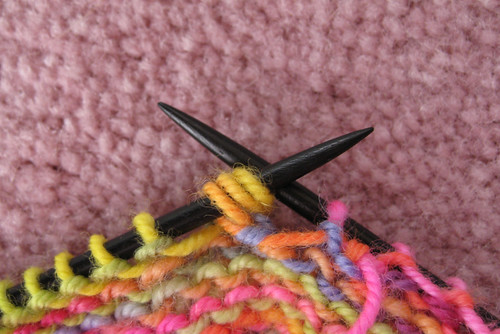
Then purl these three stitches together.

Here's the purl side:
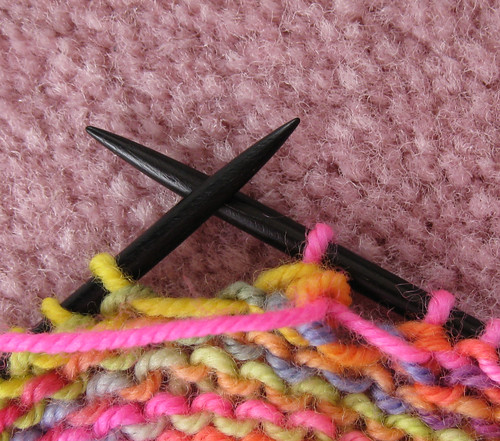
The he knit side looks the same as knitting 3 stitches together through the back loops as shown above, so I didn't take another photo.
Yet another method is described in the Walker book. Purl two stitches together. Keeping the yarn in front, put the stitch back on the left-hand needle. Pass the next stitch over this one, then transfer to the right-hand needle. I frankly don't care for the way it looks, but it's simpler to execute.
Double-Purl Decrease with No Slant (Central Double Purl Decrease)This one is actually pretty easy. The literature I encountered had some
wacky solutions; I think my answer is simpler. The first two steps are identical to the
Left-Slanting Single Purl Decrease shown above.Slip two stitches, one at a time,
knitwise.
Then insert the tip of the left needle through the front of these two stitches (which are now on the right needle), and slip them back to the left needle as a unit.
Purl three stitches together (the two you slipped and flipped, plus one on the left-hand needle).

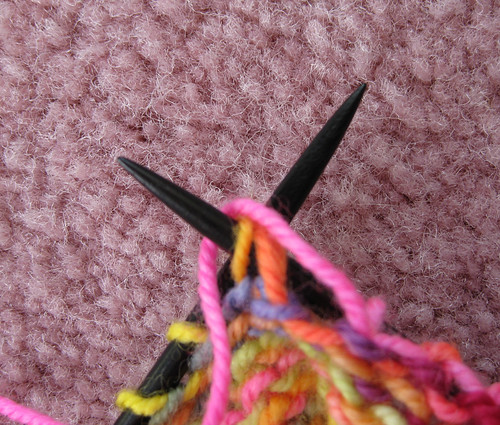
Here's the finished decrease on the purl side:

and the knit side:
